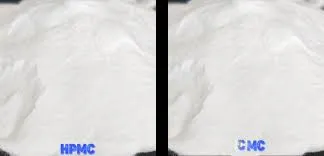
Sep . 22, 2024 12:18 Back to list
hydroxyethyl cellulose manufacturing process
Hydroxyethyl Cellulose Manufacturing Process
Hydroxyethyl cellulose (HEC) is a non-ionic cellulose ether that has found extensive application in various industries, including pharmaceuticals, construction, and personal care products
. The manufacturing process of HEC involves several critical steps, including cellulose derivatization, purification, and drying, ensuring the production of a high-quality product that meets specific industrial standards.The process begins with the selection of high-quality cellulose, typically derived from natural sources such as wood pulp or cotton. This cellulose serves as the primary raw material, which is then treated to create hydroxyethyl cellulose. The first step in the manufacturing process involves the hydroxyethylation of cellulose. This is accomplished by reacting cellulose with ethylene oxide in an alkaline medium. The use of an appropriate alkaline catalyst is crucial as it facilitates the etherification reaction, leading to the substitution of the hydroxyl groups on the cellulose backbone with hydroxyethyl groups.
The reaction parameters, such as temperature, duration, and the ratio of reagents, are carefully controlled to ensure efficient conversion and achieve the desired degree of substitution (DS). A specific DS level determines the solubility and viscosity properties of the resultant HEC, making these parameters crucial in tailoring the product for its end uses.
hydroxyethyl cellulose manufacturing process

Once the hydroxyethylation reaction is complete, the product is subjected to a neutralization process, where excess ethylene oxide and alkaline catalysts are neutralized. This step is essential for preventing any residual reactive agents that may affect the stability and safety of the final product. The neutralized mixture is then purified, typically through processes such as precipitation, where organic solvents or alcohols are used to separate unreacted cellulose and other by-products from the HEC solution.
The next step involves drying the purified HEC to obtain a stable powder form. Drying can be performed using various techniques, including spray drying or vacuum drying, which ensures the removal of moisture while preserving the integrity of the cellulose structure. The final product is then milled to achieve the desired particle size and packaging specifications, ready for distribution.
Quality control is a vital aspect of the HEC manufacturing process. Various tests, including viscosity measurements, particle size analysis, and degree of substitution evaluations, are carried out to ensure that the product meets the specific requirements for different applications.
In summary, the manufacturing of hydroxyethyl cellulose involves the careful hydroxyethylation of cellulose, followed by neutralization, purification, and drying processes. The precision in each step is crucial in delivering a high-quality product that caters to the diverse needs of industries relying on HEC for its unique properties.
-
Unlocking the Benefits of HPMC Products: A Gateway to Versatile Applications
NewsAug.07,2025
-
Unleashing the Potential of HPMC Ashland: A Comprehensive Look
NewsAug.07,2025
-
Tile Bonding Cellulose: The Key to Superior Adhesion and Durability
NewsAug.07,2025
-
Hydroxypropyl Methylcellulose Powder: The Versatile Component in Modern Pharmaceuticals
NewsAug.07,2025
-
Hydroxyethyl Cellulose: The Versatile Solution for Various Industries
NewsAug.07,2025
-
Hydroxyethyl Cellulose (HEC): The Versatile Polymer for Various Applications
NewsAug.07,2025







